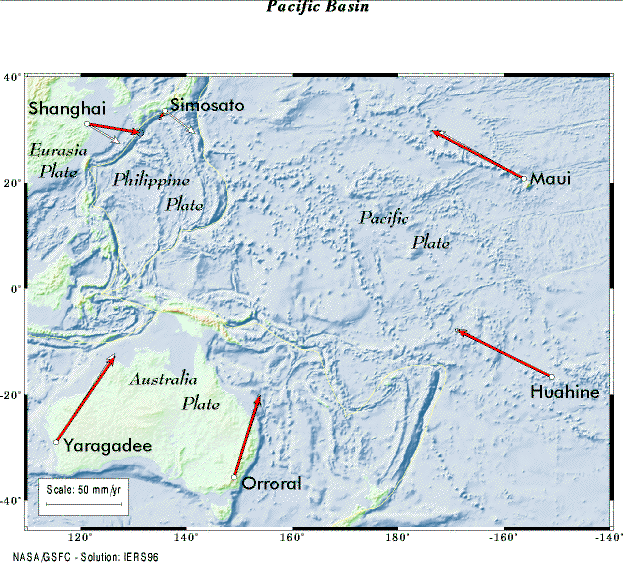Coincidence? I think not.Earthquakes, Tsunamis And Nuclear Testing
Artificial means of inducing earthquakes
Earthquakes are sometimes caused by human activities. Such activities include the injection of fluids into deep wells, the detonation of large underground nuclear explosions, the excavation of mines, and the filling of large reservoirs. In the case of deep mining, the removal of rock produces changes in the strain around the tunnels. Slip on preexisting faults or outward shattering of rock into the cavities may occur. In all other situations, the induction mechanism is thought to involve elastic strain release, as in the case of tectonic earthquakes. Here, earthquakes are triggered by small changes in the local strain field that produce rock fracture or fault slip. Local changes in strain around large underground explosions have been known to produce slip on already strained faults in the vicinity.
Nuclear Bomb Tests and their relationship to Earthquakes planetwide
- Nuclear bomb testing has doubled the earthquake rate.
- Gary Whiteford, Professor of Geography, University of New Brunswick
- Abnormal meteorological phenomena, earthquakes and fluctuations of the earth's axis are related in a direct cause-and-effect to testing of nuclear devices.
- Shigeyoshi Matsumae, President Tokai University Yoshio Kato, Department of Aerospace Science
Secretary of Defense William S. Cohen, quoted as saying at a conference in April 1997, "Others are engaging even in an eco type of terrorism, whereby they can alter the climate, set off earthquakes or volcanos remotely, through the use of electromagnetic waves."
The Earth as a weapon in 21st century of wars
IMC India - US Nuclear Testing Possible Culprit for Indian Ocn Quake
Was the Christmas/Boxing Day 2004 Earthquake-Tsunami Event Seismic (Tectonic) Warfare or Environmental Warfare by Default?

Plate tectonics - Wikipedia, the free encyclopedia
A Lesson in Plate Tectonics
Plate Tectonics, the Cause of Earthquakes
From
Oilfield Review Summer 2000 - Seismicity in the Oil Field
PDF version
Earthquakes can be triggered by human actionScientists have observed that earthquakes can be triggered by human action.
Induced seismicity, or seismic activity caused directly by human involvement, has been detected as a result of water filling large surface reservoirs, development of mineral, geothermal and hydrocarbon resources, waste injection, underground nuclear explosions and large-scale construction projects.
It is important to understand the conditions under which seismicity may be induced so that these operations can be performed safely.
The notion that human activity can provoke earthquakes is not new.
In the 1870s, proposals for impounding water in man-made lakes across regions of southern California, USA, were rejected because of concerns that this might trigger earthquakes.
The hundreds of small earth-quakes detected immediately after the 1936
drilling of the Hoover Dam in Nevada and Arizona, USA, provided the first definite evidence of such an effect. Since then, more than 100 other cases have been reported around the world.""In all these cases, the result of human interference was to change the state of stress in the surrounding volume of earth. If the stress change is big enough, it can cause an earthquake, either by fracturing the rock mass—in the case of mining or underground explosions—or by causing rock to slip along existing zones of weakness.
...
In many areas where the rock is not under large tectonic stresses, the seismic energy released during induced events is low—typically of magnitude 0 to 3—and not even felt on the earth’s surface.
However, if the rock mass is already under large tectonic stresses, the energy added by man’s endeavors can have a destabilizing influence.
Even minor actions can trigger strong seismicity."
Correlating Seismic Activity with Hydrocarbon ExploitationIt is always difficult to know whether seismicity is the result of human modifications in the region or if it is natural seismic activity related to tectonic processes; timing could be the key to knowing the difference.
In general, the answer might be obtained if a regional seismic network had been installed in advance of the hydrocarbon development, dam construction or mining operation. The seismic network could record a background level of natural seismicity and quantify its characteristics. If, after the beginning of human action, a significant change in seismicity character is recorded, it could reasonably be interpreted as a seismic reaction of the rock formation to man’s intervention.
Installation of seismic recording networks andassessment of background seismic activity are already common practice in regions where the level of natural seismicity is high. However, instable areas without a history of natural seismicity and where no sizeable earthquakes are expected, an advance seismic background study usually is not performed."
"The correlation between seismic activity andhydrocarbon exploitation means the two are related, but it does not indicate which one is the cause, which one is the effect, and how long it takes the cause to create the effect."
Exploiting SeismicityFew will deny that there is a relationship between hydrocarbon recovery and seismic activity, but exactly how strong a relationship exists has yet to be determined. Furthermore, what can or should be done about it sparks another debate.
In regions of high tectonic potential energy, hydrocarbon production can cause severe increases in seismic activity and trigger strong earthquakes..."
Find blog posts, photos, events and more off-site about:
Korea, Hawaii, Earthquake, North-Korea, nuclearbomb, nucleartest, nuke
No comments:
Post a Comment